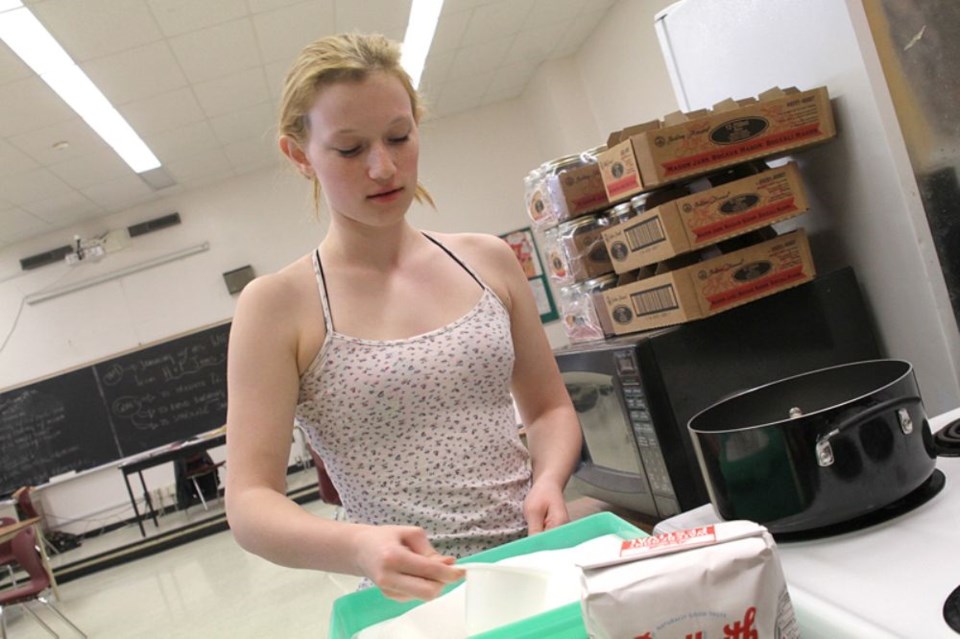THUNDER BAY -- Mariah Dykstra says traditions of the past are being lost.
On Wednesday the Grade 12 student and her classmates at Sir Winston Churchill Collegiate and Vocational Institute spent the morning learning how to make jams and jellies, a skill that used to be integral to every homestead.
It’s an art most modern students take for granted.
Jams and jellies are plucked from the grocery store shelves, the biggest decision whether or not to go with the crunchy brand of peanut butter or stick with smooth to make their morning PB&J.
“We’re so set in our ways right now,” said Dykstra, who celebrated her 18th birthday in the kitchen blending blueberries, stirring sugar into pots and learning the ways of her ancestors.
“It’s easier to look back then to learn the old things. I think it’s really nice to have someone come in here and teach us how to make jam. I’ve never learned that before and I’d never have the chance to. My grandparents don’t do that.”
Classmate Grace Lovis said it’s an especially important skill in Northern Ontario, where growing seasons are short and most communities are somewhat isolated.
“Instead of going out and getting things that would have been flown in from halfway across the world, that wouldn’t even be in season, we want to think about how to preserve and sustain local food throughout our winter,” the 17-year-old said.
“Jamming and canning and things like this are super important because our generation is kind of out of touch with that tradition and we’re trying to get back to those traditional ways.”
Too many people have lost touch with the land, said Lovis, who has made raspberry jam with her mother in the past.
She said when her parents and grandparents were young, they got excited when watermelons came into season.
Today, most people simply march to the grocery store and grab one, without a second thought.
“Now, the taste of our food has degenerated from genetically modified organisms and we’re not getting them at the peak of season.
They’re just being shipped when they’re not ripe. They ripen on the truck. And they’re sprayed with a bunch of chemicals. It’s taking away from our taste,” Lovis said.
Student supporter professional Pat Wielobob introduced the craft to the students, drawing on her own experience at the Thunder Bay Country Market where she and her husband Henry have a weekly stand.
She said with a surprising abundance of berries found naturally in Northwestern Ontario, learning how to preserve them eat during the colder months makes a lot of sense.
Too many people have let the ways of the past disappear, saying they’re too old or make too much and it just goes to waste.
“Yes, it is a dying art because when you tell young people how to do jam, they just kind of look at you (blankly),” she said.
If they don’t want to eat the jam, they can always give it as a gift.
“Nothing is nicer than getting a homemade gift, Wielobob said.
